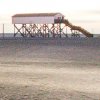SecureGSM said:Don, sorry. With all due respect, I took the liberty of pointing out that the following your statement is incorrect. DPAF tech does not results in slightly poorer high ISO performance. That's all.
Personally, I've noted that the dual pixel technology does seem to result in a slightly poorer high ISO noise.
Mt. Spokane said that, not me......
Personally, I don't know how you could tell the difference. The lithography has changed, the design has changed, the pixel size has changed, and the processing has changed.... there is no example of an identical camera, one with and the other without dual pixel, to compare between....
Upvote
0

